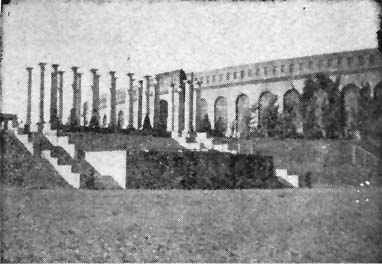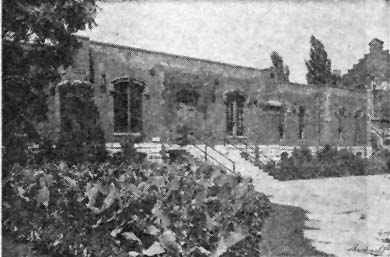
No. 19 Memorial Stadium
To get the desired three by four inch view of Nebraska's stadium a photographer might walk around it seven times and his pursuit would still be in vain, for it ovals away from him endlessly. One could get a pointblank shot at it from the air but empty seats, even people enmasse, bundled in blankets, aren't as attractive as arched windows, which lend beauty to the mammoth structure. In the foreground of this picture is the military department's reviewing stand, Which furnished not only requisite proportions but perspective suitable to the times war now having put college athletics in the background with no gentle hand.
The stadium, which holds 30,000 without the bleachers, is a memorial to U. of N. men who have died in the nation's wars. The half million dollar cost was defrayed by students, faculty, alumni and friends. Many a tonsil shredding joust has taken place within the stadium's great arms. The following from the helpful typewriter of Walter Dobbins give details:
"The first game played on stadium sod was with the Oklahoma Sooners, Oct 13, 1923, just a week before dedication of the bowl. With its building Nebraska became a 'big time' football school. Games were scheduled with top flight teams from north, south, east and west. The largest crowd ever packed into the home field witnessed Nebraska's 7 to 0 victory over Indiana Oct 20, 1937.
"Some of Nebraska's gridiron triumphs have been recorded at the stadium, including the amazing 14 to 7 victory over Notre Dame's Four Horsemen in 1923; the 17 to 0 win over Rockne's eleven in 1924 and the last of the 11 game series with the Fighting Irish. New York U.'s national title hopes were blasted on the same field in 1926 and 1927. Greatest of all victories, however, are later ones--the 14 to 9 defeat of Minnesota in 1937 and the 6-0 win over the Gophers in 1939."
